
Exterior and interior
Cracking on with the review and there are some interesting features both inside and outside. Externally it’s not a bad looking case at all, although our sample did sport a couple of dings straight out the box (we hope retail versions will be blemish-free). The huge side window gives you a massive view of the insides, which are likely to be clad in water-cooling hardware. The two side panels use a Lian Li-esque pop-open system, released by pressing large buttons on the rear of the case that shunt a rack of locking nodules forwards allowing you to remove the panel.Click to enlarge
It works well and provides a means of dealing with the enormous and heavy steel panels a little more elegantly than brute force and thumb screws. However, as we also remember from Lian Li-s cases, the panels can rattle a little, especially if you don’t lock them down properly. This is probably part due to their immense size and also the locking mechanism.
Click to enlarge
The front panel is perhaps the best-looking part of the case, with a large brushed aluminium removable fascia at the bottom that hides a triple 120mm fan filter and the three front 120mm fans. The width of the case is so extreme that standard 5.25in drive bay covers would look out of place, so Corsair has added these huge panels instead. The top one is actually a stealth pop-down cover that reveals a healthy helping of USB 2.0 and USB 3.0 ports as well as the reset switch, with the large button above being the power switch. It’s arguably a slightly inelegant solution for a front panel, but the build quality and clean lines generally make up for this.
Click to enlarge
The case is held aloft by four large rubberised case feet, although the reason for this escapes us as the base of the case doesn’t add anything in the way of ventilation. The sides are a different matter, though, as both have a huge strip of mesh running down each side. This should compensate a little for the fact that a majority of the front panel lacks ventilation, with only a few small vents round the edges and gaps round the aluminium fascia in front of the fans. The roof is also one huge section of mesh. It’s not the best setup for airflow, but then if you’re buying the case and not investing in water-cooling gear too, we’d consider you to be slightly mad.
Click to enlarge
In terms of expansion, there are four external 5.25in bays and a total of nine 3.5in caddies, each able to support 2.5in SSDs too. These are split into three removable cages, which can be repositioned in the base of the case, with the one in the upper section offering hot-swap capability using pre-fitted SATA cables that you simply plug into your motherboard. A daisy-chained SATA power connector means you just need one PSU SATA cable to power the whole cage.
Unless you’re some kind of electrical engineering god, or work for Nvidia or AMD, and have somehow created some home-brew graphics card that’s four feet long, you won’t be having any issues with your graphics card fitting inside the 900D, there’s at least 400mm of space, even with the mid-mounted drive cage installed. There are two PSU mounts in the base, each limited to 22cm while for hopefully obvious reasons, no specific limit is offered for CPU coolers.
Click to enlarge
Cable routing is a huge plus point for the 900D. The rubber grommets are solid and don’t fall out at every opportunity unlike some cases we’ve seen, and Corsair has wisely included an 8-pin EPS 12V extension cable. There’s a huge amount of room behind the motherboard tray to hide cables too, and Corsair has included two neat little clips that can hold 24-pin ATX cables and 8-pin EPS 12V cables in place. In addition to the large side panels, there are two latch-secured flaps that drop down at the sides beneath the side panels. These reveal a bank of additional fan mounts (protected by a large magnetic fan filter) and provide access to the base of the case, which apart from cooling related matters (head over the page to see more) will make it easier to install the PSU.
However, the latches didn’t prove to be particularly strong meaning that even the slightest pressure from inside from a PSU cable, or even moving the case on occasions, would make them pop open. Hopefully once you’ve built the system and planted it under your desk, they should stay put. Corsair has stated that both this latch and the previously mentioned packing issues will be fixed with retail samples

MSI MPG Velox 100R Chassis Review
October 14 2021 | 15:04

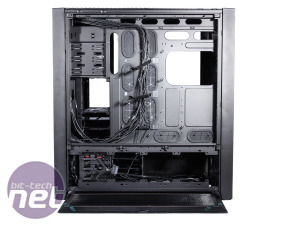
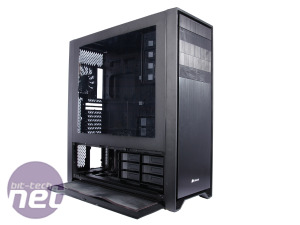
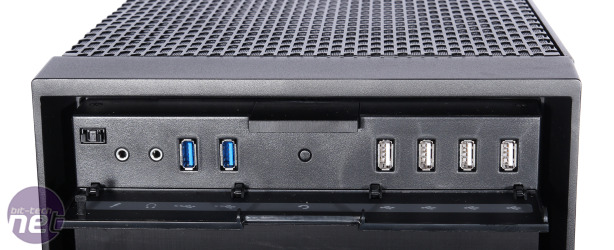
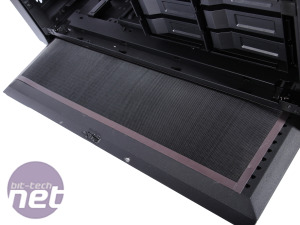
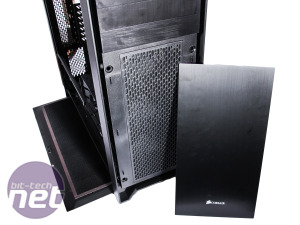
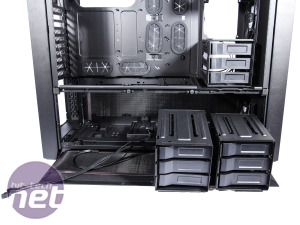
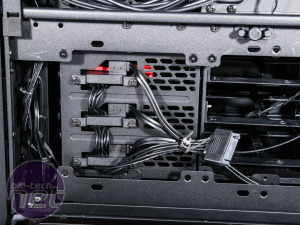
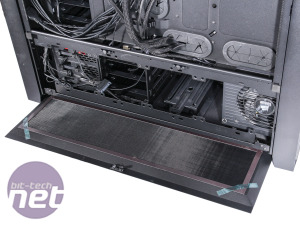
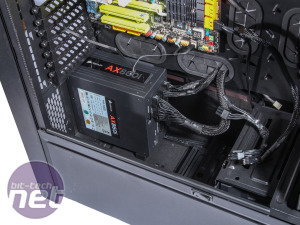
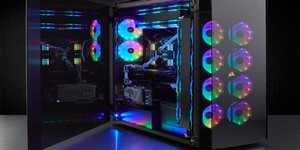
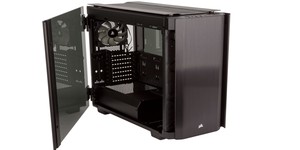
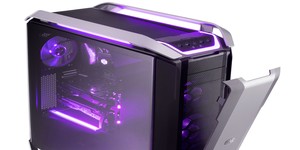




Want to comment? Please log in.